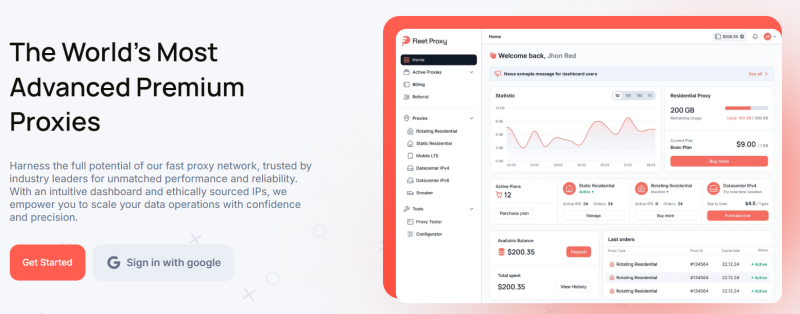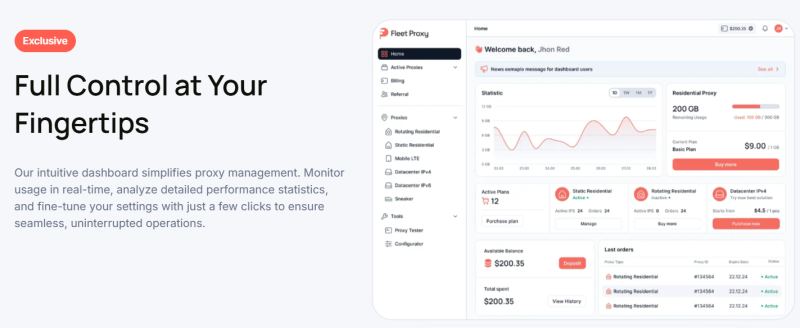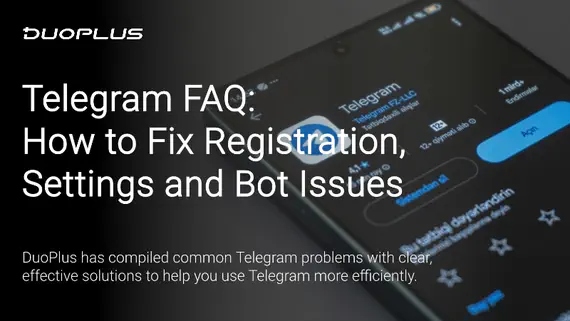
How to Upload Videos on Reddit and Manage Multiple Reddit Accounts?
As one of the largest content-sharing communities worldwide, Reddit has become a vital channel for brand promotion and …
OCR can return the right answer, but the solve still doesn’t hold. That’s what happens when traffic reaches the page looking off. Same headers, clean session, stable image, and yet the target resets the request or triggers a secondary challenge. The issue isn’t what the solver did. The issue started well before the CAPTCHA even loaded.
Targets running anti-bot logic don’t make decisions after the image shows up. They make them during handshake, when the IP first hits the page and the session starts to build. If the traffic flow feels synthetic, nothing that follows is going to land clean.
Session Behavior Starts Earlier Than Most Think
The solve doesn’t begin when the image appears. It starts when the request hits DNS. Resolver paths, ASN patterns, user-agent fingerprints, and header order all influence whether the server decides the session looks trustworthy. If that trust is broken early, the CAPTCHA either doesn’t validate or reroutes through a fallback that leads to another block.
Some users think adding random delays or spoofed screen sizes can fix this. What they miss is that most fingerprinting happens before the front-end logic even runs. That’s why success depends more on proxy behavior than OCR design.
Fleetproxy Turns CAPTCHA Solve Attempts Into Real Access
Solvers can’t manage traffic. They decode images, return tokens, and pass off the result. Whether or not that result works depends entirely on the environment around it. Fleetproxy handles the part that comes before the solver kicks in, including the IP, the session setup, the pacing, and the behavioral footprint left behind by the request.
This is where most setups fail. The OCR performs, the tool looks stable, but the access layer underneath is still built on recycled or unstable IPs that can’t survive real detection logic. Fleetproxy closes that gap by giving operators access to pools and routing systems built specifically for high-pressure solve pipelines.
What Makes Fleetproxy Suited for CAPTCHA Tasks
Unlike generic proxy providers, Fleetproxy structures its infrastructure around control and behavioral integrity, not just volume. You’re not stuck with default toggles or rotating IPs that reroute mid-solve. You’re working with networks that maintain session logic from first request to last redirect.
Here’s how that looks in practice:
Clean Session Control
●Configure sticky or rotating sessions with custom TTL values
●Keep login states alive for multi-step CAPTCHA gates
●Prevent session resets that interrupt or delay the solve
●Choose IP durations based on the target’s detection depth
Isolated Routing by Project
●Tag proxy pools to separate campaigns, tools, or solve types
●Avoid contamination between scraper tools and OCR tasks
●Assign static ranges for sensitive flows, like account creation or local audits
Real-Time Visibility
●Watch requests land and exit in the Fleetproxy dashboard
●Monitor session time, bandwidth, usage by tag
●Kill or replace IPs instantly without needing ticket approval
Zero-Chance Rotation
For domains that log reuse patterns, this mode lets you run single-use solves across a rotating pool that never repeats an IP.
Perfect for:
●Review platforms
●Local SERP zoning tools
●Social login scrapers
Recommended Fleetproxy Solutions for CAPTCHA-Sensitive Work
Fleetproxy offers multiple block types, but for CAPTCHA-heavy flows, certain setups hold up better under pressure:

Residential IPs (Sticky Sessions Enabled)
Ideal for:
●Login-based CAPTCHA flows
●Multi-step form scrapers
●Platforms where state tracking is high
Use this when session memory matters and the target rewards long, consistent behavior. These IPs let the session develop naturally without random resets, which is critical for solving multiple CAPTCHAs in the same workflow.
Mobile LTE (Rotating or Zero-Chance)
Ideal for:
●Location-sensitive CAPTCHAs
●High-risk domains like review or ticketing platforms
●Flows where header diversity matters
Mobile networks bring built-in trust because they originate from real telecom infrastructure. Use rotation with care and TTLs should be kept short, and volume should be spread evenly. Zero-chance mode lets you run aggressive solves without reappearing in detection logs.
Datacenter IPs with Custom Headers
Ideal for:
●Low-sensitivity CAPTCHAs where speed matters more than stealth
●Internal tooling, monitoring, or QA test environments
●High-frequency audit scripts
Not suitable for high-stakes CAPTCHA bypass unless the server has minimal detection layers. Still valuable for volume tasks where you can afford occasional resets or incomplete solves.
How to Get Started with Fleetproxy for CAPTCHA Tools

1.Sign up at fleetproxy.io
2.Choose a plan that fits the size and sensitivity of your solve workload
3.Use the code 30OFF at checkout for 30% off your first purchase
Inside the dashboard:

1.Create a project for your CAPTCHA flow
2.Select the proxy type and region
3.Choose sticky duration or rotation style
4.Tag sessions for OCR vs crawler vs login flows
5.Pipe credentials into your solver (e.g., CaptchaAI) via username:password or IP auth

Fleetproxy supports direct integration with most modern stacks, including:
●Puppeteer
●Playwright
●Python requests
●Headless Chrome
●Custom HTTP stacks
No need for additional proxy middleware. You can drop the credentials straight into the tool and start testing behavior against live CAPTCHA walls within minutes.
Why Proxies Break More Solves Than the Solver Itself
A lot of operators assume the OCR tool failed because the solve didn’t land. Most of the time, the answer is fine. What broke was the way the request arrived. Either the headers came in wrong, the IP was reused too quickly, or the server saw behavior that didn’t match the structure of a normal session.
When these flags stack up, the server reroutes, delays, or skips parts of the response. Your solver keeps running, but the output becomes meaningless. Logs might look clean, but the CAPTCHA never validated in a usable way.
That’s why solve success is about traffic health over toolkits.
Clean Traffic Is the Foundation of a Working Solve Pipeline
Solvers don’t fix the problems caused by bad traffic. If the IP already triggered something, every request after that carries the same mark. Rotating doesn’t clear it. Retrying doesn’t reset it. The session stays flagged.
Fleetproxy takes care of what happens before the solver even runs. It manages session timing, IP reuse, and TTL patterns that go sideways under load. Those are the parts that decide whether the solve holds together or breaks in silence.
You won’t see that in the logs, but it still ruins the result. Fleetproxy holds that layer steady, so the solver has something solid to work with.
DuoPlus Cloud Phone
Protect your multiple accounts from being

As one of the largest content-sharing communities worldwide, Reddit has become a vital channel for brand promotion and …

Telegram has become one of the fastest-growing instant messaging tools globally, widely adopted for community …
No need to purchase multiple real phones.
With DuoPlus, one person can operate numerous cloud phones and social media accounts from a single computer, driving traffic and boosting sales for you.
